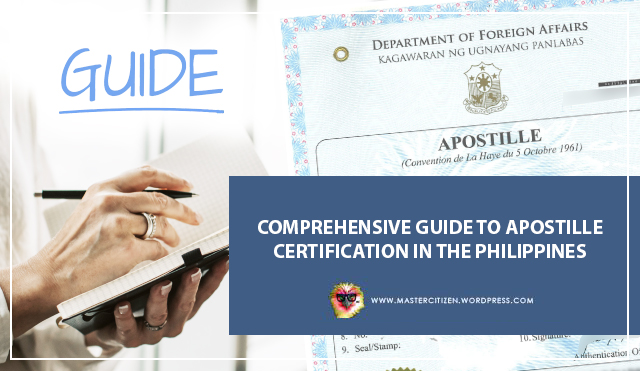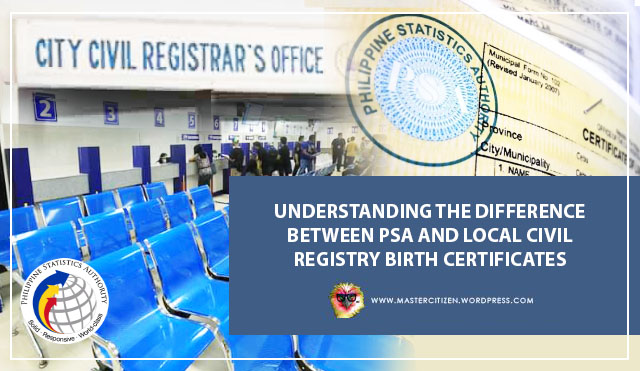Comprehensive Guide to Apostille Certification in the Philippines
As of May 14, 2019, the Philippines officially joined the Apostille Convention, marking a significant shift in the authentication of Philippine documents for international use. Instead of the traditional Authentication Certificate, commonly known as the "red ribbon", the Apostille now serves as the primary proof of authentication.
Once a document undergoes the Apostille process at the DFA-OCA, there is no longer a requirement for further authentication or legalization by foreign Embassies or Consulates. However, it is important to note that exceptions exist for countries that are not part of the Apostille Convention or those that have raised objections to the Philippines' accession to the convention.
Which Documents Does the Apostille Convention Apply To?
The Apostille Convention applies to a wide range of public documents, including (but not limited to this list):
- Birth, marriage, and death certificates
- Notarized documents such as Powers of Attorney and Affidavits
- Court judgments and rulings
- Academic transcripts, diplomas, and degrees
- Business and legal documents, like articles of incorporation and contracts
In essence, any document that is considered a public document in one country can be certified through an Apostille for use in another signatory country without further authentication.
The Apostille Convention is applicable only when both the nation where the public document originates and the nation where it is intended for use are signatories to the Convention. However, it is important to note that in certain cases, such as Austria, Finland, Germany, and Greece, which are Apostille countries but have raised objections to the Philippines' accession, the Philippine Apostille may not be directly accepted. In such instances, documents involving these countries may still require authentication or legalization by the relevant Embassy or Consulate.
Benefits of Apostille
The Apostille offers several significant benefits:
- Simplicity and Speed: Apostilles simplify the authentication process by condensing it into a single step. This significantly reduces the time and effort required to get a document recognized internationally.
- Universal Recognition: Documents bearing an Apostille are recognized in all Hague Convention member countries, which include over 120 nations. This facilitates smoother transactions and legal proceedings across borders.
- Cost-Effective: Compared to the traditional authentication process, which often involves multiple levels of bureaucracy, an Apostille is a cost-effective solution.
- Legal Validity: Apostilles carry the same legal weight as traditional authentication methods, making them widely accepted for various legal purposes.
Apostille vs. Red Ribbon Authentication
In the Philippines, prior to the Apostille system's implementation, documents were authenticated using the traditional "red ribbon" process. While both methods aim to verify the authenticity of documents, they differ in several key aspects:
- International Recognition: The Apostille is recognized in all Hague Convention member countries, while the "red ribbon" authentication is primarily accepted within the Philippines and a few select countries.
- Simplicity: The Apostille process is more straightforward and less time-consuming than the "red ribbon" process, which often required multiple government agencies' involvement.
- Consistency: Apostilles are standardized certificates, ensuring uniformity in the authentication process. In contrast, the "red ribbon" method might vary in form and requirements depending on the specific government agency authenticating the document.
Two Types of Apostille Application at the DFA
In the Philippines, the Department of Foreign Affairs (DFA) offers two methods for obtaining an Apostille:
Walk-in Application: Individuals can personally visit the DFA's authentication division to submit their documents for Apostille. This method provides the opportunity for face-to-face assistance and a quicker turnaround time, but it may require waiting in line and spending time at the DFA office.
Online Application: The DFA also offers an online application system, allowing individuals to submit their documents electronically. This method offers convenience and avoids the need for in-person visits, making it an attractive option for those with busy schedules or living far from DFA offices. However, online applications may have specific requirements and processing times, so it's essential to follow the guidelines carefully.
The Apostille is a valuable tool for simplifying the authentication of documents for international use. With its universal recognition and streamlined process, it has become an essential component of the modern globalized world. Understanding the benefits of Apostille and how it differs from traditional authentication methods like the "red ribbon" is crucial for individuals and businesses engaged in international transactions. Whether you choose the walk-in or online application method at the DFA, obtaining an Apostille has never been more accessible, making it easier than ever to navigate the complexities of international document authentication.




Comments
Post a Comment